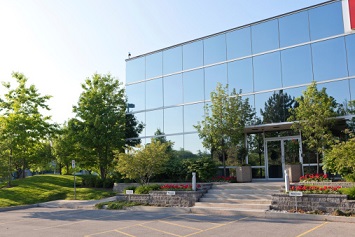The security concept known as CPTED—or Crime Prevention Through Environmental Design—started back in the 1970s with the publication of architect Oscar Newman’s book, Defensible Spaces. His thinking has influenced building designers, facility maintenance directors, security consultants, and even police agencies since that time. The question today is, does it still work?
The CPTED approach focuses on five areas to deter, reduce, or minimize the possibility or likelihood of crime in or near a public agency, private sector building, schools, or residence: (1) surveillance, (2) access control, (3) territoriality, (4) maintenance, and (5) activity support. Each of these five provisions builds upon and links to the others.
Surveillance. We can use people; security equipment; alarms; police or security patrol activities; security policies and procedures; and the inherent, intuitive design of the existing property to create a perception of safety for legitimate users (e.g., employees, taxpayers, vendors, visitors, homeowners) and a strong likelihood of detection for unauthorized individuals.
Access control. Put simply, this concept “keeps good people in and bad people out.” By using employee, homeowner, or neighbor vigilance; security access control devices, like key cards; and new or updated door locks, we can limit or prevent access to those who do not have a legitimate reason to be in or around our facility or residence.
Territoriality. This promotes neighborhood pride in local properties by creating a “community,” using lighting, landscaping, repairs, litter and graffiti control, parking enforcement, etc., to make it “our building or school,” as opposed to just, “the building or the school.” This helps discourage trespassing, transients, vandalism, loitering, and unauthorized use of the facility by outsiders.
Maintenance. This concept suggests we “keep on keeping on” by building upon existing security procedures, devices, equipment, and controls. By making repairs and improvements before any incident forces us to consider them, we can maintain the effectiveness and high levels of security we desire.
Activity support. This concept includes ongoing work by the organization to support the concepts of CPTED in current and future safety, security, risk management, and crime prevention projects. This requires a review of security incidents and the changing face of what needs to be protected and how to do it in a cost-effective, feasible manner.
Critics of CPTED argue that the title of the concept should be changed to “deterrence” rather than “crime prevention,” since the ideas in the approach merely create a deterrence posture, instead of actually stopping crime. It’s always difficult to prove a negative, especially when it comes to what drives crooks away from a particular target and toward another one. Does actually putting thorny bushes in front of windows prevent would-be burglars from using that access point? Can’t security cameras offer better coverage than what passing citizens or employees might see and report?
Since law enforcement has embraced the concept at its onset, it’s clear that CPTED will still be a part of crime prevention and security thinking going forward, for both public facilities, private sector businesses, K–12 schools, and individual homes. Supporters point to lower overall security costs—and more creative solutions—than just the standard “more cameras, more gates, and more bars” thinking.

